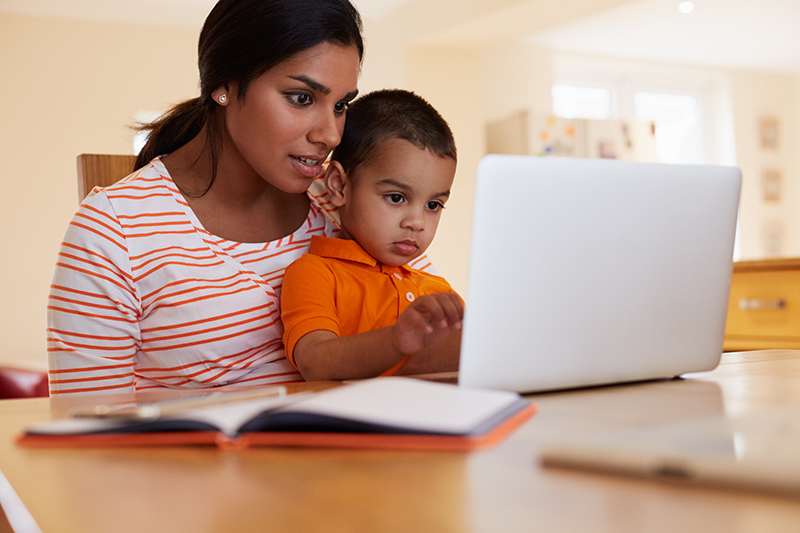Families For Life | The Wild, Wild Web

By age five or six, your child is developing a healthy curiosity about the world - including the many fascinating novels on the Internet. There are as many educational and fun kid-friendly sites as there are dangerous and child-inappropriate ones.
This might not seem like a child-raising issue of great concern but the ease of access to Web-connected devices makes it one. It has been estimated that up to 7.5 million children round the world under 13 years of age have Facebook accounts, and easy access to a tablet or smartphone.
Here are a few tips to keep your pre-schooler safe on the Internet:
Explain the dangers
Just like there are safe and unsafe situations in real life, tell your child that there are safe and unsafe websites in virtual life. The point is to encourage your child to be open with you and to tell you immediately about anything on the Internet that disturbs them.
Be mindful of strangers masquerading as ‘friends’
Tell your child to avoid contact with strangers on the Internet; just like how they should not interact with strangers in real life, too. Explain that people on the Internet are not always who they say they are, and that if such strangers contact them, that you should be the first to know straightaway.
Keep informed
Go online together with your child to be aware of what sites are visited and the content on them. This is a good way to model appropriate online behaviour to your child.
Make the screen accessible
Install the computer in a common room of the house so you can view the monitor at all times. Similarly, for monitoring, keep smartphone and tablet use confined to these same rooms. Do not permit your child to use devices in bed.
Search safely
Use safe search settings or use special kid-friendly search engines such as Safesearchkids.com or search.kidoos.org. This will help limit inappropriate exposure to adult websites.
Be clever about clicks
Explain to your child why files and links from unknown sources should not be accessed. This is a great time explain how viruses attack computers. Another option is to allow your pre-schooler to surf only one site at a time and ask for adult help to navigate new pages or sites.
Use a child-safe app
Try the Kido’z app. It is designed specifically for pre-schoolers and turns all smartphones, tablets or computers into kid-friendly devices. Parental controls let you toggle between online/offline modes, set time limits and manage what your child can or cannot see or do online. Best of all, you can set up a custom profile for each child. Other PC options include NetNanny, Norton Family and Kaspersky PURE.
The key is to establish your expectations and limits clearly and specify what the consequences are if your child breaks the rules for using the Internet. It is a good idea to explain to your child that you have installed parental controls and why – trust is the cornerstone of any relationship, including your relationship with your child.
If you keep the lines of communication open and are consistent in your approach (do not forget to set a good example), your child will quickly learn how to become a responsible online citizen. These are good habits that will carry on through his primary and secondary school years – by laying a good foundation early in life you will be saving yourself a headache later!
Child-friendly sites and apps
Unsure where to begin? Try these child-friendly and educational options.
Netsmartzkids
Games, e-books, videos and more, dedicated to promoting child safety online.
Storyplace
Interactive online reading with activities and more with a special section dedicated to pre-schoolers.
Uptoten
Games and activities for children up to 10 years of age – there’s plenty here for your six-year-old!
Explore more
Contributed by:
Early Childhood Development Agency